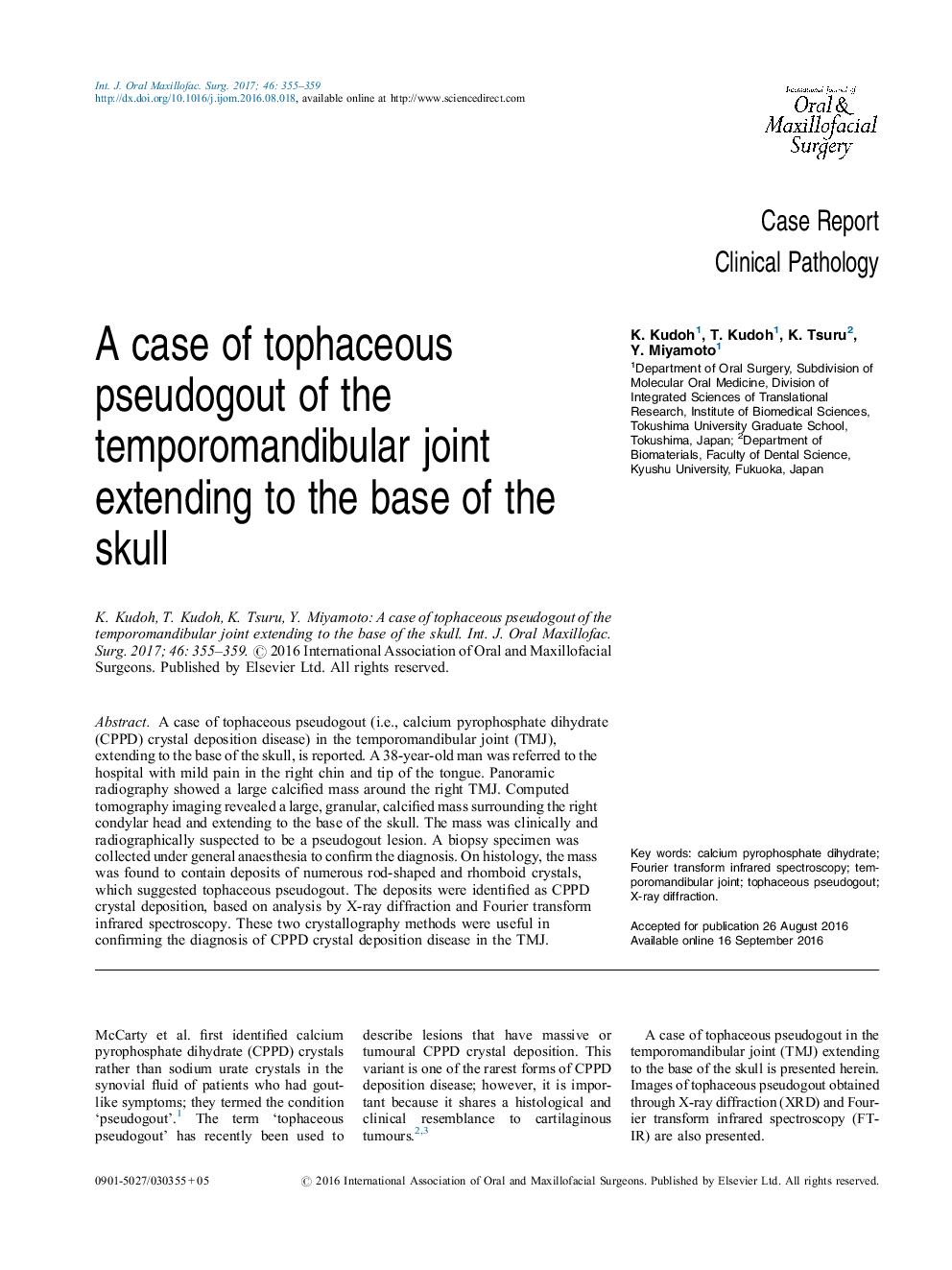| Article ID | Journal | Published Year | Pages | File Type |
|---|---|---|---|---|
| 5639032 | International Journal of Oral and Maxillofacial Surgery | 2017 | 5 Pages |
A case of tophaceous pseudogout (i.e., calcium pyrophosphate dihydrate (CPPD) crystal deposition disease) in the temporomandibular joint (TMJ), extending to the base of the skull, is reported. A 38-year-old man was referred to the hospital with mild pain in the right chin and tip of the tongue. Panoramic radiography showed a large calcified mass around the right TMJ. Computed tomography imaging revealed a large, granular, calcified mass surrounding the right condylar head and extending to the base of the skull. The mass was clinically and radiographically suspected to be a pseudogout lesion. A biopsy specimen was collected under general anaesthesia to confirm the diagnosis. On histology, the mass was found to contain deposits of numerous rod-shaped and rhomboid crystals, which suggested tophaceous pseudogout. The deposits were identified as CPPD crystal deposition, based on analysis by X-ray diffraction and Fourier transform infrared spectroscopy. These two crystallography methods were useful in confirming the diagnosis of CPPD crystal deposition disease in the TMJ.
